
The Enigmatic Beauty of Antelope Canyon
Discover the mystical allure of Antelope Canyon, a captivating slot canyon in Arizona, known for its stunning light beams and wave-like rock formations.
Antelope Canyon is a breathtaking slot canyon located in the heart of Navajo land in Arizona. Known for its wave-like structure and the light beams that shine down into the openings of the canyon, it offers a mesmerizing experience for photographers and nature lovers alike. The canyon is divided into two sections, Lower Antelope Canyon and Upper Antelope Canyon, each offering unique and stunning views. Upper Antelope Canyon, also known as 'The Crack,' is famous for its easy access and the dramatic light beams that occur, particularly during the summer months. The canyon walls, sculpted by centuries of flash flooding and erosion, create an ethereal glow that changes with the sun's position, making every visit unique. Lower Antelope Canyon, known as 'The Corkscrew,' offers a more adventurous experience with its narrow, steep pathways and ladders. Visiting Antelope Canyon requires a guided tour, as it is located on Navajo land. The guides, often from the Navajo Nation, provide not only safe passage but also share the history and cultural significance of the canyon. Each tour offers ample opportunities for photography, and the guides often assist visitors in capturing the best shots. Whether you are an avid photographer or simply someone who appreciates natural wonders, Antelope Canyon is a must-visit destination that will leave you in awe.
Local tips in Antelope Canyon
- Book your tour in advance, especially during peak season, to secure a spot.
- Wear comfortable shoes suitable for walking on uneven surfaces.
- Visit during midday for the best light beams in Upper Antelope Canyon.
- Bring a camera with a wide-angle lens to capture the stunning views.
- Be prepared for temperature changes; bring layers to stay comfortable.
- Respect the local Navajo customs and follow your guide's instructions.
The Enigmatic Beauty of Antelope Canyon
Antelope Canyon is a breathtaking slot canyon located in the heart of Navajo land in Arizona. Known for its wave-like structure and the light beams that shine down into the openings of the canyon, it offers a mesmerizing experience for photographers and nature lovers alike. The canyon is divided into two sections, Lower Antelope Canyon and Upper Antelope Canyon, each offering unique and stunning views. Upper Antelope Canyon, also known as 'The Crack,' is famous for its easy access and the dramatic light beams that occur, particularly during the summer months. The canyon walls, sculpted by centuries of flash flooding and erosion, create an ethereal glow that changes with the sun's position, making every visit unique. Lower Antelope Canyon, known as 'The Corkscrew,' offers a more adventurous experience with its narrow, steep pathways and ladders. Visiting Antelope Canyon requires a guided tour, as it is located on Navajo land. The guides, often from the Navajo Nation, provide not only safe passage but also share the history and cultural significance of the canyon. Each tour offers ample opportunities for photography, and the guides often assist visitors in capturing the best shots. Whether you are an avid photographer or simply someone who appreciates natural wonders, Antelope Canyon is a must-visit destination that will leave you in awe.
When is the best time to go to Antelope Canyon?
Iconic landmarks you can’t miss
Ken's Tours Lower Antelope Canyon
Experience the breathtaking beauty of Lower Antelope Canyon with Ken's Tours, where stunning sandstone formations and vibrant light beams await your exploration.

Dixie's Lower Antelope Canyon Tours
Discover the enchanting beauty of Lower Antelope Canyon with guided tours that unveil the stunning landscapes and rich history of this natural wonder.

Antelope Canyon Navajo Tours
Discover the breathtaking beauty of Antelope Canyon, a natural wonder renowned for its stunning rock formations and vibrant light beams.

Lower Antelope Canyon
Explore the stunning sandstone formations of Lower Antelope Canyon, a breathtaking natural wonder in Arizona, perfect for photographers and nature lovers alike.

Upper Antelope Canyon
Experience the breathtaking beauty of Upper Antelope Canyon, where nature's artistry and stunning light create an unforgettable adventure in Arizona.

Rattlesnake Canyon
Explore the breathtaking landscapes and stunning rock formations of Rattlesnake Canyon, a natural park in Page, Arizona, perfect for adventure seekers.

Antelope canyon
Experience the breathtaking beauty of Antelope Canyon, where stunning sandstone formations and ethereal light beams create unforgettable memories in Arizona's natural wonder.

Antelope Canyon Sunset Trail (Diné)
Explore the breathtaking Antelope Canyon Sunset Trail in Arizona, where vibrant rock formations and stunning landscapes await every adventurer.

Unmissable attractions to see
Antelope Canyon Navajo Tours
Explore the enchanting Antelope Canyon in Arizona, a stunning natural wonder with vibrant colors and breathtaking formations, perfect for nature lovers and photographers.

Antelope Slot Canyon Tours by Chief Tsosie
Discover the breathtaking beauty of Antelope Slot Canyon with guided tours showcasing its stunning sandstone walls and captivating light beams.

Adventurous Antelope Canyon
Explore the enchanting beauty of Adventurous Antelope Canyon, a natural wonder featuring stunning slot canyons and vibrant sandstone formations.

Historic Navajo Bridge
Explore the Historic Navajo Bridge in Marble Canyon, Arizona, where history meets breathtaking natural beauty along the Colorado River.

Wahweap Overlook
Discover the stunning vistas of Lake Powell at Wahweap Overlook, a must-visit destination for breathtaking views and unforgettable moments in nature.

Horseshoe Bend Slot Canyon Tours
Experience the breathtaking beauty of Horseshoe Bend Slot Canyon with guided tours that reveal nature's stunning artistry and geological wonders.

Lees Ferry
Explore the breathtaking landscapes and rich history of Lees Ferry, a scenic spot in Marble Canyon, Arizona, perfect for outdoor adventures.

The Chains
Discover the breathtaking hiking trails and stunning vistas of The Chains in Page, Arizona, a must-visit destination for nature lovers and adventurers.

Hanging Garden Trailhead
Discover the breathtaking beauty of Hanging Garden Trailhead in Page, Arizona – a top hiking destination with stunning views and unique flora.

Rainbow Bridge National Monument
Explore the awe-inspiring Rainbow Bridge National Monument in Powell, Utah—a natural wonder and serene escape in the heart of the desert.

Antelope Valley Canyon Tours- Ligai Si' Anii
Explore the breathtaking beauty of Antelope Valley Canyon, a natural wonder featuring stunning light beams and vibrant colors that will leave you in awe.

Wahweap Viewpoint
Discover the stunning vistas at Wahweap Viewpoint, a scenic gem in Page, Arizona, showcasing Lake Powell and Glen Canyon's breathtaking landscapes.

Lees Ferry Campground
Experience nature's beauty at Lees Ferry Campground, a perfect blend of adventure, history, and tranquility in Marble Canyon, Arizona.

Lake Powell Navajo Tribal Park
Experience the breathtaking beauty of Lake Powell Navajo Tribal Park, where stunning landscapes meet rich Navajo culture in Arizona's heart.

Mystical Antelope Canyon Tours & Arrowhead Campground
Discover the enchanting beauty of Antelope Canyon and unwind at Arrowhead Campground, a must-visit for nature lovers in Page, Arizona.

Essential places to dine
Rustler’s Rooste
Experience authentic American cuisine with stunning views at Rustler's Rooste - where every meal is an adventure into the Wild West.

Big John's Texas BBQ
Discover the authentic taste of Texas-style barbecue at Big John's Texas BBQ in Page, Arizona—where smoky flavors meet warm hospitality.

El Tapatio
Experience authentic Mexican flavors at El Tapatio in Page, Arizona - where every meal is a celebration of taste.
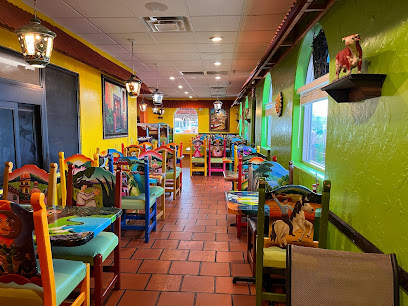
Fiesta Mexicana Restaurant
Discover the authentic taste of Mexico at Fiesta Mexicana Restaurant in Page, Arizona – where vibrant flavors meet warm hospitality.

Big E Steakhouse & Saloon
Experience mouthwatering steaks and authentic American cuisine at Big E Steakhouse & Saloon in Grand Canyon Village.

BirdHouse
Discover BirdHouse in Page, AZ - where delectable chicken dishes meet an inviting atmosphere and budget-friendly prices.

Gone West Family Restaurant
Discover the heartwarming charm of Gone West Family Restaurant in Page, AZ—where delicious Southwestern cuisine meets family-friendly fun.
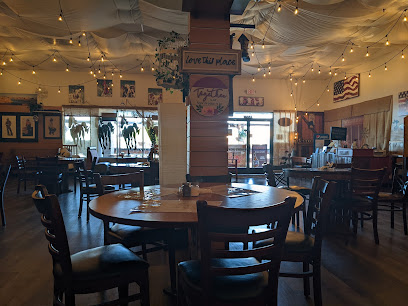
State 48 Tavern
Discover State 48 Tavern in Page, Arizona – where delicious American cuisine meets a vibrant bar atmosphere amidst stunning landscapes.

Ranch House Grille
Experience authentic Southwestern flavors at Ranch House Grille in Page, Arizona—perfect for breakfast or lunch amidst stunning natural beauty.

Dam Bar & Grille
Experience delicious grilled cuisine and refreshing drinks at Dam Bar & Grille in Page, Arizona – perfect after your adventures in stunning landscapes.

McDonald's
Experience quick bites and familiar flavors at McDonald's in Page, AZ – perfect for travelers exploring the natural wonders nearby.

Slackers
Discover delicious hamburgers at Slackers in Page, Arizona - where flavor meets adventure in every bite!

Strombolli’s Italian Restaurant & Pizzeria
Discover the taste of Italy at Strombolli’s Italian Restaurant & Pizzeria in Page, Arizona – where every meal feels like a celebration.

Taco Bell
Savor delicious Mexican-inspired fast food at Taco Bell in Page, Arizona - perfect for travelers seeking flavor on the go!

Jack in the Box
Experience diverse fast food delights at Jack in the Box in Page AZ - from classic burgers to tasty breakfast items.

Markets, malls and hidden boutiques
Walmart Supercenter
Discover convenience and variety at Walmart Supercenter in Page, AZ—your ultimate shopping destination for all your travel needs.

Dollar General
Explore a wide variety of affordable products at Dollar General, your convenient shopping destination in Page, Arizona.

Lost Clouds
Explore the world of vaping at Lost Clouds, Page's premier vaporizer store, offering quality products and exceptional service in a welcoming atmosphere.

Dollar Tree
Explore endless savings and unique finds at Dollar Tree in Page, Arizona - your go-to for budget-friendly shopping!

Page Lake Powell Furniture
Explore Page Lake Powell Furniture for a diverse selection of high-quality home furnishings, perfect for every style and need in Arizona.

Stix Liquor & Sporting Goods
Discover diverse liquor options and fishing supplies at Stix Liquor & Sporting Goods in Page, Arizona, a must-visit for every traveler.

Hibbett Sports
Discover the best athletic footwear and apparel at Hibbett Sports in Page, Arizona – your ultimate shopping destination for sports gear.

Pow Wow Trading Post
Explore the vibrant Pow Wow Trading Post in Page, AZ, where local culture meets unique treasures, perfect for memorable souvenirs and gifts.

Page Bead Store
Explore creativity at the Page Bead Store, where unique beads and local crafts come together in the heart of Arizona's stunning landscape.

Shirts & Shades
Explore the vibrant spirit of Arizona at Shirts & Shades, where fashion meets local culture in the heart of Page.

Kelly's Sugar House
Discover the sweetest treats and unique gifts at Kelly's Sugar House in Page, AZ – your ultimate destination for a delightful shopping experience.

Antelope Canyon Gift Shop
Explore the Antelope Canyon Gift Shop for unique souvenirs and local crafts that capture the beauty of Arizona's stunning landscapes.

Family bargain center
Explore the Family Bargain Center in Page, AZ for unique thrift store treasures and great deals on vintage finds and local souvenirs.
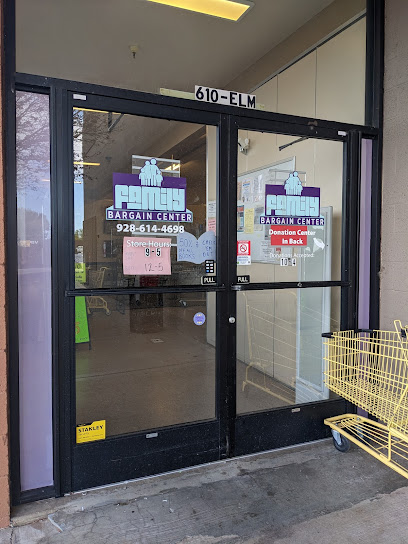
Scrap Stamp N Sew
Explore Scrap Stamp N Sew in Page, Arizona, a paradise for crafters with an extensive selection of supplies and a welcoming atmosphere.

The Grand Circle Arts Gallery
Discover local art and unique gifts at The Grand Circle Arts Gallery in Page, Arizona - a cultural gem showcasing the creativity of the region.

Essential bars & hidden hideouts
Big John's Texas BBQ
Experience the rich flavors of Texas-style barbecue at Big John's Texas BBQ, the perfect dining spot for meat lovers in Page, Arizona.
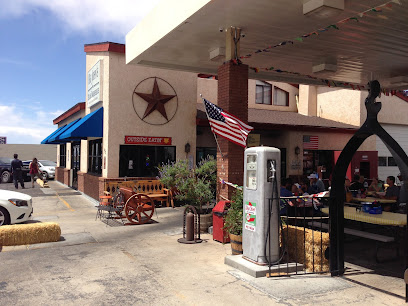
El Tapatio
Discover the vibrant flavors of authentic Mexican cuisine at El Tapatio, a must-visit restaurant in Page, Arizona, perfect for all food lovers.

Fiesta Mexicana Restaurant
Experience the vibrant flavors of Mexico at Fiesta Mexicana Restaurant, where every dish tells a story and every visit feels like a fiesta.

BirdHouse
Discover BirdHouse in Page, AZ, where delicious chicken dishes meet a friendly atmosphere, perfect for travelers seeking a flavorful dining experience.

Gone West Family Restaurant
Discover family-friendly dining with southwestern charm, live music, and a unique gift shop at Gone West Family Restaurant in Page, Arizona.

Denny's
Experience classic American diner fare at Denny's in Page, AZ, where hearty breakfasts and comfort food await you any time of the day.
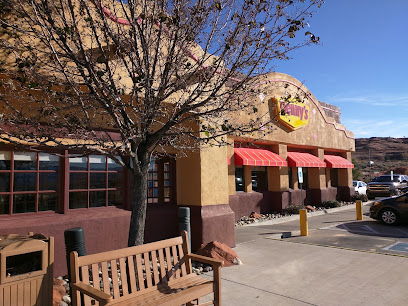
State 48 Tavern
Enjoy delicious American cuisine and a lively atmosphere at State 48 Tavern, the perfect spot to unwind in Page, Arizona.

Ranch House Grille
Experience the vibrant flavors of Southwestern American cuisine at Ranch House Grille, your go-to breakfast and lunch spot in Page, Arizona.

Dam Bar & Grille
Savor the essence of American cuisine at Dam Bar & Grille, a vibrant dining spot in Page, Arizona, perfect for tourists exploring the region.

Slackers
Discover the ultimate burger experience at Slackers in Page, Arizona, where delicious flavors and a lively atmosphere await every visitor.

Jack in the Box
Experience the fast food charm of Jack in the Box in Page, AZ, featuring a diverse menu of burgers, breakfast items, and delightful desserts.

Sunset 89
Discover Sunset 89 in Page, Arizona - where delightful cuisine meets breathtaking sunset views, perfect for tourists seeking a memorable dining experience.

Bonkers Restaurant
Savor Italian and American flavors at Bonkers Restaurant in Page, Arizona, where every meal is a celebration of culinary delight.

Sonic Drive-In
Experience the nostalgic charm of Sonic Drive-In in Page, Arizona, offering a delicious fast-food menu and classic drive-in service.
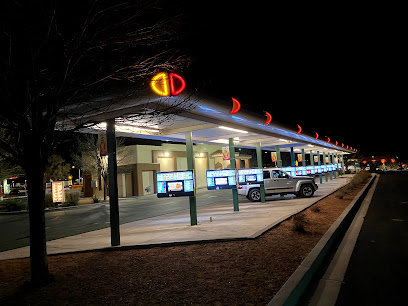
R D's Drive-In
Experience the flavors of America at R D's Drive-In, a fast food haven in Page, AZ, perfect for families and adventure seekers alike.

Local Phrases about Antelope Canyon
-
- HelloYá'át'ééh
[yah-ah-tay] - GoodbyeHágoónee'
[hah-goo-ney] - YesHaa
[hah] - NoDóó
[doh] - Please/You're welcomeAhe'hee'
[ah-hay-hee] - Thank youAhéhee'
[ah-hay-hee] - Excuse me/SorryShicheii
[shee-chay] - How are you?Ahee'hee nínízin?
[ah-hay-hee nee-neez-een] - Fine. And you?Háádéé
[hah-deh] - Do you speak English?Nihizaad igoo shí
[nee-hee-zaad ee-goo shee] - I don't understandBilasáana
[bee-lah-sah-nah]
- HelloYá'át'ééh
-
- I'd like to see the menu, pleaseBéésh bee hózhǫ́
[beh-sh bay hoh-zhohn] - I don't eat meatBilasáana díí nináálééh
[bee-lah-sah-nah dee nee-nah-ah-lay] - Cheers!Ahe'hee'
[ah-hay-hee] - I would like to pay, pleaseBéésh bee yá'át'ééh
[beh-sh bay yah-ah-tay]
- I'd like to see the menu, pleaseBéésh bee hózhǫ́
-
- Help!Ánííníshní
[ah-nee-nee-shnee] - Go away!Tsééhééh
[tsay-hay] - Call the Police!Wóhoot'éego nít'éego baa hózhǫ́
[woh-ho-tay-go nee-tay-go bah hoh-zhohn] - Call a doctor!Ániiníshní
[ah-nee-nee-shnee] - I'm lostNíłtso
[neel-tso] - I'm illNítsá
[neet-sah]
- Help!Ánííníshní
-
- I'd like to buy...Béésh bee yá'át'ééh
[beh-sh bay yah-ah-tay] - I'm just lookingBéésh bee díí níłtso
[beh-sh bay dee nee-ltso] - How much is it?Háádéé nít'éego baa hózhǫ́
[hah-deh nee-tay-go bah hoh-zhohn] - That's too expensiveAhéhee' díí nínízin
[ah-hay-hee dee nee-neez-een] - Can you lower the price?Níltsá dóó baa hózhǫ́
[neel-tsa doh bah hoh-zhohn]
- I'd like to buy...Béésh bee yá'át'ééh
-
- What time is it?T'áá hwóóhóó baa hózhǫ́
[taa-ah hwoh-hwoh bah hoh-zhohn] - It's one o'clockT'áá hwóóhóó baa éí
[taa-ah hwoh-hwoh bah ay] - Half past (10)Níłjoolí
[neel-joh-lee] - MorningT'áá hwóóhóó
[taa-ah hwoh-hwoh] - AfternoonHa'át'éego
[hah-ah-tay-ay-go] - EveningT'áá hwóóhóó
[taa-ah hwoh-hwoh] - YesterdayNíłjoolí
[neel-joh-lee] - TodayYá'át'ééh
[yah-ah-tay] - TomorrowBéésh aníízí
[beh-sh ah-nee-zee] - 1T'áá
[taa-ah] - 2Naaki
[nah-kee] - 3Táá'
[taa-ah] - 4Dį́į́'
[dee-ee] - 5Ashdla'
[ash-dlah] - 6Hastąą'
[has-taan] - 7Tseebíí'
[tsee-bee] - 8T'ąą'
[taan] - 9Náhást'éí
[nah-hast-ay] - 10Naakwóó'
[nah-kwoh]
- What time is it?T'áá hwóóhóó baa hózhǫ́
-
- Where's a/the...?Hádí
[hah-dee] - What's the address?Hádí
[hah-dee] - Can you show me (on the map)?Dóó chééh dah nínízin
[doh chay-hay dah nee-neez-een] - When's the next (bus)?Nílyéé'
[neel-yay] - A ticket (to ....)Béésh bee yá'át'ééh
[beh-sh bay yah-ah-tay]
- Where's a/the...?Hádí
History of Antelope Canyon
-
Antelope Canyon, located in the American Southwest, was formed over thousands of years by the erosion of Navajo Sandstone. Flash flooding and wind have carved its narrow passageways, creating the stunning visual effects seen today. This geological wonder is divided into two separate sections known as Upper Antelope Canyon (The Crack) and Lower Antelope Canyon (The Corkscrew).
-
Antelope Canyon is situated within the Navajo Nation and holds significant cultural and spiritual importance for the Navajo people. The Navajo term for Upper Antelope Canyon is 'Tsé bighánílíní', meaning 'the place where water runs through rocks'. For Lower Antelope Canyon, the term is 'Hazdistazí' or 'spiral rock arches'.
-
Though Antelope Canyon had been known to Native Americans for centuries, it was 'discovered' by European settlers much later. In the late 19th and early 20th centuries, explorers and ranchers began to document the area, but it remained relatively unknown to the broader public until the late 20th century.
-
Antelope Canyon gained international fame largely due to the stunning photographs captured by photographers, particularly in the 1980s and 1990s. The unique lighting within the canyon's narrow passageways creates ethereal images, making it a popular destination for both amateur and professional photographers.
-
Antelope Canyon has been the site of several dangerous flash floods, which are a natural part of its formation process. A tragic incident occurred in 1997 when 11 tourists lost their lives in Lower Antelope Canyon due to sudden flooding. This event led to increased safety measures and regulations for visitors.
-
Due to its popularity and fragile environment, Antelope Canyon has been the focus of various conservation efforts. The Navajo Nation, along with local and federal agencies, have implemented measures to protect the canyon's delicate sandstone formations while allowing for sustainable tourism.
-
Today, Antelope Canyon can only be visited through guided tours operated by Navajo tour companies. These tours provide educational information about the canyon's geology, history, and cultural significance, ensuring that visitors have a safe and enriching experience while respecting Navajo traditions.
Antelope Canyon Essentials
-
Antelope Canyon is located near the town of Page in northern Arizona. The nearest major airport is Phoenix Sky Harbor International Airport, approximately 280 miles away. From Phoenix, you can either rent a car and drive up to Page, which takes about 4-5 hours, or take a domestic flight to Page Municipal Airport. Another option is to drive from Las Vegas, Nevada, which is about 275 miles away and takes around 4.5 hours by car.
-
Once in Page, the primary way to reach Antelope Canyon is by guided tour, as the canyon is located on Navajo land and requires a guide for entry. Several tour companies operate from Page, offering both Upper and Lower Antelope Canyon tours. It's advisable to book these tours in advance, especially during peak seasons. Rental cars are available in Page for exploring the surrounding areas, and taxis are also an option for local transportation.
-
The official currency is the United States Dollar (USD). Most businesses in Page and the tour operators accept credit and debit cards. However, it is advisable to carry some cash for smaller establishments, tips, and emergencies. ATMs are available in Page for cash withdrawals.
-
Antelope Canyon and Page are generally safe for tourists. However, like any travel destination, it's essential to take standard precautions. Keep an eye on your belongings and avoid leaving valuables in your car. Be cautious of the weather, especially during monsoon season, as flash floods can occur in the canyon. Always follow the guidance of your tour guide for safety.
-
In case of emergency, dial 911 for immediate assistance. The nearest hospital is Page Hospital, located in the town of Page. It is recommended to have travel insurance that covers medical emergencies. For minor health issues, there are pharmacies in Page where you can purchase over-the-counter medications.
-
Fashion: Do wear comfortable clothing and sturdy shoes suitable for walking in sandy and rocky terrain. Avoid wearing high heels or open-toed shoes. Religion: Do show respect for the Navajo culture and traditions. Avoid touching or disturbing any cultural artifacts. Public Transport: Do rent a car for convenience, as public transportation options are limited. Greetings: Do greet people with a friendly 'Hello' or 'Hi'. Navajo people appreciate politeness and respect. Eating & Drinking: Do try local Navajo cuisine if you get the chance. Don't litter; always dispose of your trash properly.
-
To experience Antelope Canyon like a local, visit during the off-peak seasons (late fall and early spring) when the canyon is less crowded. Early morning and late afternoon tours offer the best lighting for photography. Engage with your tour guide, who can share fascinating stories and cultural insights about the Navajo Nation. Don't miss exploring other nearby attractions like Horseshoe Bend and Lake Powell for a more comprehensive experience of the region.
Nearby Cities to Antelope Canyon
-
Things To Do in Escalante
-
Things To Do in Kanab
-
Things To Do in Grand Canyon Village
-
Things To Do in Bryce Canyon City
-
Things To Do in Mt Carmel
-
Things To Do in Panguitch
-
Things To Do in Springdale
-
Things To Do in Torrey
-
Things To Do in Cedar City
-
Things To Do in Flagstaff
-
Things To Do in Blanding
-
Things To Do in Beaver
-
Things To Do in St. George
-
Things To Do in Winslow
-
Things To Do in Richfield










